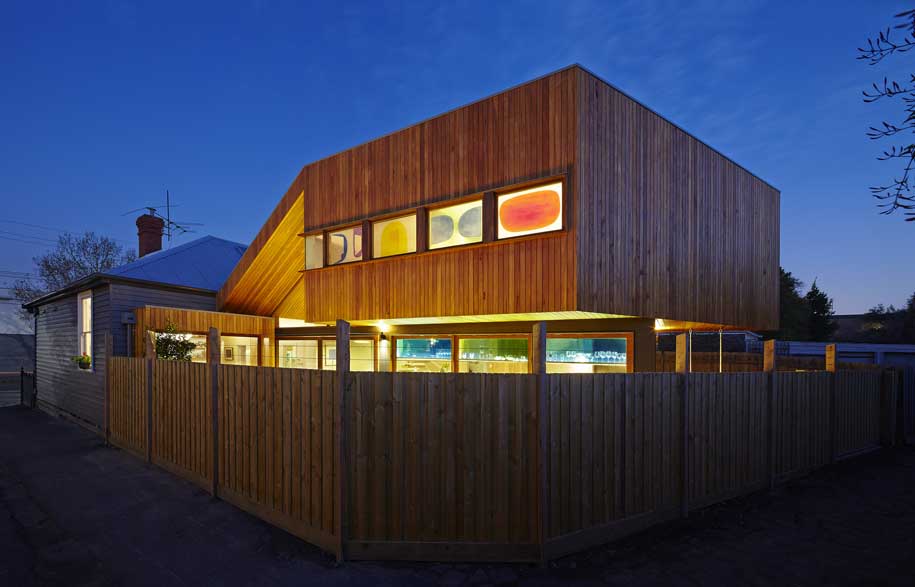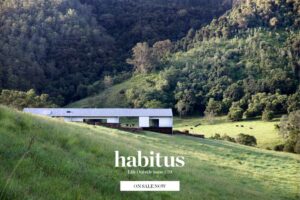This original Edwardian cottage suffered from a lack of space and light; both strong requisites for a busy family of five.
So Julie Firkin Architects stepped in to create a warm, friendly home across two levels, with spaces both big and small plus living and garden areas that could be observed from the kitchen.
“The original Edwardian weatherboard cottage, which addresses the street has been maintained while a two-level addition at the rear provides new kitchen and dining areas and a master bedroom,” she said.
Contemporary in character and contrasting the Edwardian component, the addition is angular and tapered-in, with an overhanging upper level and variety of subtly overlapping spatial volumes.
Large expanses of timber cladding spread out in hard, angular lines to demarcate each large or small space, bathed in northern light and allowing occasional moments of strong colour to emerge.
“A generous triangular void over the dining area mediates between the single storey cottage and the two-storey addition,” Firkin said.
The complexity in the project lies in its unusual shape, which is a direct response to the constraints of the context. But placing a considerable amount of the build on the second level provided for a smaller footprint underneath, allowing for the back garden in line with the client’s wishes.
Large sliding doors and awning windows open up easily, and the kitchen counter can be accessed directly from the garden.
“Since moving in it has been used as a ‘soup kitchen’ and an ‘ice-cream bar’,” Firkin says.
The clients also wanted a strong sustainability component across the design.
The living spaces face north, while the bathrooms and utility spaces are oriented to the south. Furthermore, the ground level addition is built upon a concrete slab, providing thermal mass. The overhanging upper level provides shade in summer while allowing in winter sun during cold months..
Dramatically, the new addition is clad in sustainably harvested Silvertop Ashtimber, which is also used inside on the feature ceiling and timber joinery.
“The cladding was sourced from plantation or temperate regrowth forests, using a process of radial sawing, which was specifically designed to maximise the recovery of sawn timber from smaller logs,” she says.
Jule Firkin Architects
j-f-a.com.au

























